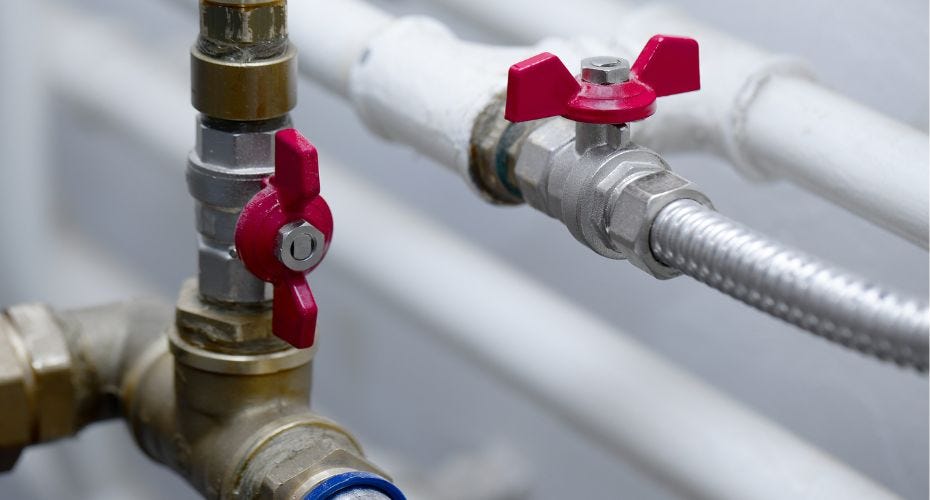The plumbing system is the lifeline of any building, responsible for delivering clean water and removing waste. Selecting the appropriate piping material is pivotal to the system’s effectiveness and longevity. In this comprehensive guide, we’ll explore various piping materials, their characteristics, applications, and considerations to help you make an informed decision.
Understanding Plumbing System Requirements:
Before delving into material options, assess your plumbing system’s unique needs. Factors like water pressure, temperature fluctuations, corrosiveness of the water, and intended use (residential, commercial, or industrial) play a crucial role in determining the ideal piping material.
Common Types of Piping Materials:
Several materials dominate the plumbing industry. Copper, known for its durability and corrosion resistance, is widely used. PEX, a flexible and cost-effective alternative, has gained popularity.
PVC and CPVC are renowned for affordability and corrosion resistance, while galvanized steel boasts strength and longevity.
Copper Piping:
Copper pipes have been a staple in plumbing for decades. Their corrosion resistance, durability, and ease of installation make them suitable for both residential and commercial applications.
Copper’s longevity and antimicrobial properties further contribute to its appeal.
PEX Piping:
PEX pipes offer flexibility and ease of installation. Their resistance to freezing makes them ideal for cold climates. With a reputation for cost-effectiveness and compatibility with diverse water supply systems, PEX has become a preferred choice for modern plumbing installations.
PVC and CPVC Piping:
PVC and CPVC pipes are lightweight, corrosion-resistant, and affordable. While PVC is commonly used for drainage and vent systems, CPVC, treated for increased temperature resistance, is suitable for hot water distribution.
Both materials are easy to install, making them popular choices in residential plumbing.
Galvanized Steel Piping:
Galvanized steel pipes were once prevalent due to their strength and durability. While they are still used in certain applications, their susceptibility to corrosion over time has led to a decline in popularity.
Understanding their limitations and appropriate applications is crucial when considering galvanized steel.
Considerations for Choosing Between Materials:
When deciding on a piping material, consider factors such as cost, local building codes, maintenance requirements, and the specific needs of your plumbing application.
Different materials have distinct advantages and limitations, so a careful assessment of these factors will guide your decision-making process.
Environmental Impact and Sustainability:
With a growing focus on sustainability, it’s essential to consider the environmental impact of piping materials. Evaluate production processes, recyclability, and ecological footprint.
Materials like PEX and PVC, known for being more environmentally friendly, may align better with your sustainability goals.
FAQs:
Q1:What factors should I consider when selecting piping material?
Consider water pressure, temperature, corrosiveness, intended use, and local building codes.
Q2:Is PEX better than copper for plumbing?
It depends on your specific needs. PEX is flexible and cost-effective, while copper is durable and corrosion-resistant.
Q3:Are there any restrictions on the use of certain materials in my region?
Check local building codes, as some areas may have restrictions on certain piping materials.
Q4:How long do different piping materials typically last?
Copper can last over 50 years, while PEX and PVC have a lifespan of 20-40 years.
Q5:What are the maintenance requirements for various piping materials?
Copper requires minimal maintenance, while other materials may have specific care needs.
Q6:Can I mix different piping materials in my plumbing system?
It’s generally not recommended, as different materials may have different expansion rates and compatibility issues.
Q7:What is the cost difference between copper and PEX piping?
PEX is often more cost-effective than copper, but prices can vary based on factors like location and demand.
Q8:Are there any health concerns associated with specific piping materials?
Copper is antimicrobial, while PEX and PVC are generally considered safe for drinking water. Always check for compliance with local health regulations.
Conclusion:
Choosing the right piping material for your plumbing application is a critical decision that involves understanding your system’s requirements, assessing material characteristics, and considering factors like cost and sustainability. By making an informed choice, you ensure a reliable and efficient plumbing system that meets both your immediate needs and long-term goals. Regular maintenance and adherence to local codes will further contribute to the durability and success of your chosen piping material.

A group of home improvement enthusiasts and bathroom design experts, combines in-depth knowledge and a shared passion to deliver engaging, informative content that guides readers through the world of bathroom innovation and style.

Leave a Reply